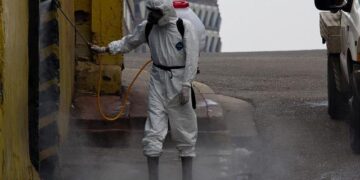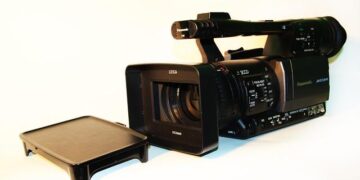The “object from the sky” that pierced through a home in Naples, FL. last month wasn’t a meteorite after all.
On April 15, NASA said the mysterious metallic cylinder—which tore through homeowner Alejandro Otero’s ceiling and floor—was actually part of a cargo pallet that contained “aging nickel hydride batteries.” The agency jettisoned the pallet from the International Space Station back in 2021, after installing new lithium-ion batteries on the artificial satellite.
NASA expected the hardware to “fully burn up during entry through Earth’s atmosphere on March 8, 2024,” yet things turned out quite differently for the Otero family.
“It was a tremendous sound, and it almost hit my son. He was two rooms over and heard it all,” Otero told Florida broadcaster WINK News. After prying the object out from between mangled floorboards, Otero said he suspected it was a meteorite.
 Recovered stanchion from the NASA flight support equipment used to mount International Space Station batteries on a cargo pallet. The stanchion survived re-entry through Earth’s atmosphere on March 8, 2024, and impacted a home in Naples, Florida. Credit: NASA
Recovered stanchion from the NASA flight support equipment used to mount International Space Station batteries on a cargo pallet. The stanchion survived re-entry through Earth’s atmosphere on March 8, 2024, and impacted a home in Naples, Florida. Credit: NASA
According to NASA, the debris was actually made of a nickel- and chromium-based superalloy called Inconel. The object originally functioned as part of a battery mount; after hitting Otero’s home, the surviving cylinder clocked in at 1.6 pounds, 4 inches tall and 1.6 inches in diameter.
In 2021, NASA anticipated the pallet would “orbit Earth between two to four years before burning up harmlessly in the atmosphere.” This week, NASA said the ISS will investigate the incident to “determine the cause of the debris survival,” adding that it’s “committed to responsibly operating in low Earth orbit, and mitigating as much risk as possible to protect people on Earth when space hardware must be released.”
While a space-junk crisis may sound like science fiction, debris left by humans in low-Earth orbit is rapidly piling up. The European Space Agency estimates there are 36,500 debris objects greater than 10 cm in Earth’s orbit. The agency reports that the total mass of all known space objects exceeds 11,500 metric tons (or more than 25 million pounds). Such junk includes everything from paint flecks and bolts to dead satellites and spent rocket boosters. Much of this stuff originates from governmental space programs, but it also comes from private companies, such as Elon Musk’s Starlink.
Around a dozen objects reenter the atmosphere on a daily basis, Moriba Jah, a professor of aerospace engineering at the University of Texas at Austin, said in a call with PopSci. “It’s not uncommon for these things to survive and make it to the surface,” explained Jah, though typically they crash into the ocean. However, as satellite launches rapidly increase, the professor cautioned that “statistically, [falling debris] will kill somebody at some point.”
According to Professor Jah, solving this problem will require more reusable and recyclable tech. Today, “we have a linear space economy where the end state of any given satellite is to become junk.” Governments need to embrace a circular approach and “mandate that satellites can’t be launched if they’re going to be single use,” Jah argued.
In a separate call, John L. Crassidis—a professor of mechanical and aerospace engineering at the State University of New York—argued to PopSci that readers shouldn’t be too worried, for now, about death by space junk. “I think I’d be a lot more concerned about getting struck by lightning than having a piece of space debris fall on me,” said Crassidis. However, the professor said the risk will grow in the coming decades. The more space junk we have, the greater the chance that “somebody’s going to be eventually hurt.”
According to estimates by the nonprofit Aerospace Corporation, the likelihood of space debris injuring a particular person is less than one in a trillion. However, a 2022 University of British Columbia study predicts there’s a 10% chance that falling space debris will result in “one or more casualties” by 2032.
[ Related: How harpoons, magnets, and ion blasts could help us clean up space junk ]
To mitigate worst-case scenarios, Crassidis pointed to the need for “hard international treaties” that require space-faring nations to follow UN space debris guidelines. “No matter what anybody tells you, we do not have the technology to take out space debris right now,” argued Crassidis, who acknowledged that Europe has some “nice experiments” in the works.
In the coming decades, “if our technology can’t catch up to the point of making that reality, and if we keep doing what we’re doing, then we’re for sure they are well on our way to Kessler syndrome,” Crassidis said, referring to a worst-case scenario in which space-junk collisions become so likely that they render low-Earth orbit useless for generations.
>>> Read full article>>>
Copyright for syndicated content belongs to the linked Source : Popular Science – https://www.popsci.com/science/space-junk-crash-florida/































